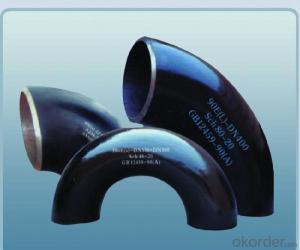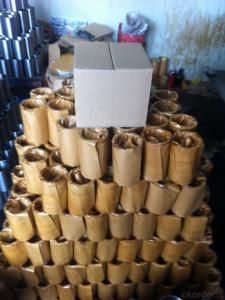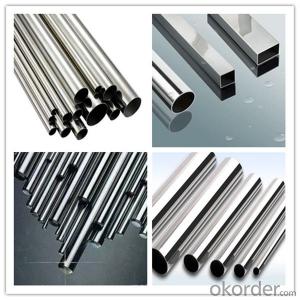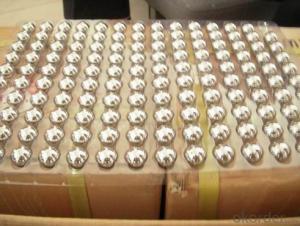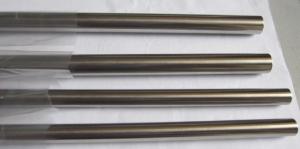6 Stainless Steel Chimney Liner
6 Stainless Steel Chimney Liner Related Searches
Best Paint For Stainless Steel Blanket Insulation For Steel Buildings Primer For Galvanized Steel Foam Filter For Stainless Steel H S Code For Stainless Steel Surface Grinding Wheels For Stainless Steel Surface Grinding Wheels For Hardened Steel Hole Saw For Stainless Steel Paint For Stainless Steel Stainless Steel For BbqHot Searches
Steel Mesh Panels For Sale Price For Stainless Steel Scrap Scrap Price For Stainless Steel Price For Stainless Steel Stainless Steel Tank For Sale Stainless Steel Sheets For Sale Cheap High Tea Sets For Sale Stainless Steel Tanks For Sale Stainless Steel For Sale High Density Fiberboard For Sale Solar Hot Water Collectors For Sale Scaffolding For Sale In Uae Scaffolding For Sale In Ireland Scaffolding For Sale In Houston Type Of Inverter For Solar Price Of Shipping Containers For Sale Types Of Inverter For Solar Stock Price For Aluminum Used Solar Inverter For Sale Steel Mesh Panels For Sale6 Stainless Steel Chimney Liner Supplier & Manufacturer from China
Okorder.com is a professional 6 Stainless Steel Chimney Liner supplier & manufacturer, offers integrated one-stop services including real-time quoting and online cargo tracking. We are funded by CNBM Group, a Fortune 500 enterprise and the largest 6 Stainless Steel Chimney Liner firm in China.Hot Products
FAQ
- The main difference between 17-7 and 15-7 stainless steel pipes lies in their composition and properties. 17-7 stainless steel is a precipitation-hardening stainless steel that contains about 17% chromium and 7% nickel. It also includes aluminum, which enables it to be heat treated to achieve high strength and hardness. This type of stainless steel is known for its excellent corrosion resistance, good formability, and high strength. It is often used in applications that require high strength and good corrosion resistance, such as aerospace components, springs, and chemical processing equipment. On the other hand, 15-7 stainless steel is a semi-austenitic precipitation-hardening stainless steel that contains about 15% chromium and 7% nickel. It also includes 2% molybdenum, which enhances its corrosion resistance. This grade of stainless steel offers good mechanical properties, high strength, and excellent corrosion resistance. It is commonly used in applications that require high strength, good formability, and resistance to stress corrosion cracking, such as springs, washers, and medical devices. In summary, while both 17-7 and 15-7 stainless steel pipes offer excellent corrosion resistance and high strength, the difference lies in their composition and specific properties. 17-7 stainless steel contains aluminum for enhanced heat treatability, while 15-7 stainless steel includes molybdenum for improved corrosion resistance. The choice between these two grades depends on the specific requirements of the application, such as strength, formability, and resistance to corrosion or stress corrosion cracking.
- To ensure compliance with required standards and specifications, stainless steel pipes are subjected to a rigorous evaluation process. Various methods are employed to assess their quality. One commonly used test is visual examination, where skilled inspectors utilize specialized equipment to meticulously inspect the pipes for any surface defects such as cracks, pits, or corrosion. Dimensional inspection is another crucial quality assessment. During this test, the pipes are carefully measured to verify if they meet the specified dimensions, including length, diameter, and wall thickness. This meticulous examination ensures that the pipes are manufactured with precision and accuracy. Mechanical tests are conducted to evaluate the strength and durability of the stainless steel pipes. These tests encompass various assessments such as tensile strength, yield strength, elongation, and hardness. Tensile strength determines the maximum stress the pipe can withstand before breaking, while yield strength measures the stress at which the pipe starts to deform permanently. Elongation gauges the pipe's ability to stretch without breaking, while hardness indicates its resistance to indentation or scratching. Non-destructive testing methods, including ultrasonic testing and eddy current testing, are also employed. These methods allow for the detection of internal defects or irregularities in the pipe using high-frequency sound waves and electromagnetic currents, respectively. These tests can identify surface cracks or flaws that may not be visible to the naked eye. Moreover, chemical composition analysis is performed to ensure that the stainless steel pipes contain the appropriate amounts of alloying elements, such as chromium and nickel. These elements are crucial in providing the pipes with corrosion resistance properties. In conclusion, stainless steel pipes undergo a comprehensive testing process to guarantee their quality, strength, and reliability for a wide range of applications in industries such as oil and gas, construction, and manufacturing.
- Yes, stainless steel pipes can be used in the petrochemical industry. Stainless steel is highly resistant to corrosion and can withstand high temperatures, making it an ideal choice for transporting and storing various petrochemical products. Its durability and strength also make it suitable for handling the high-pressure conditions often encountered in the petrochemical industry. Additionally, stainless steel pipes are easy to clean and maintain, ensuring the purity and integrity of the petrochemical products being transported. Therefore, stainless steel pipes are commonly used in petrochemical plants, refineries, and other facilities within the industry.
- To calculate the expansion of stainless steel pipes, you need to consider the coefficient of thermal expansion (CTE) of the material. The CTE is a measure of how much a material expands or contracts when subjected to temperature changes. First, determine the initial length of the stainless steel pipe. This is the length of the pipe at the starting temperature. Next, determine the final temperature at which the pipe will be operating. This is the temperature at which you want to calculate the expansion. Find the CTE value for the particular grade of stainless steel used in the pipe. The CTE is typically given in units of per degree Celsius (or per degree Fahrenheit). Multiply the initial length of the pipe by the CTE value and then multiply it by the change in temperature. This will give you the expansion or contraction of the pipe in the given temperature range. For example, let's say you have a stainless steel pipe with an initial length of 10 meters, a CTE of 17 x 10^-6 per degree Celsius, and you want to calculate the expansion at a final temperature of 100 degrees Celsius. The change in temperature would be 100 degrees Celsius (final temperature) minus the initial temperature. Expansion = Initial Length * CTE * Change in Temperature Expansion = 10 meters * 17 x 10^-6 per degree Celsius * 100 degrees Celsius Expansion = 0.0017 meters or 1.7 millimeters Therefore, the stainless steel pipe would expand by 1.7 millimeters when subjected to a temperature increase of 100 degrees Celsius. It's important to note that this calculation assumes a uniform expansion along the entire length of the pipe. In reality, thermal expansion may vary due to factors such as pipe diameter, wall thickness, and other structural considerations. Therefore, it's recommended to consult with industry standards or engineering references for more accurate calculations in specific applications.
- Yes, stainless steel pipes can be used in the automotive industry. They are commonly used for various applications such as exhaust systems, fuel lines, and cooling systems due to their high corrosion resistance, durability, and ability to withstand high temperatures. This makes stainless steel pipes a preferred choice for automotive manufacturers as they provide reliability and longevity to the vehicles.
- In order to determine the pressure drop in stainless steel pipes, one must take into account various factors including the flow rate, pipe diameter, pipe length, and the properties of the fluid being transported. The pressure drop can be calculated using the commonly used Darcy-Weisbach equation, which is as follows: ΔP = (f * (L/D) * (ρ * V^2))/2 Where: ΔP represents the pressure drop (in units of force per unit area, such as psi or Pa) f is the Darcy friction factor (which depends on flow conditions and pipe roughness) L represents the pipe length (in units of length, such as meters or feet) D is the pipe diameter (in units of length, such as meters or feet) ρ corresponds to fluid density (in units of mass per unit volume, such as kg/m^3 or lb/ft^3) V represents fluid velocity (in units of length per unit time, such as m/s or ft/s) To calculate the pressure drop, one must determine the Darcy friction factor, which is dependent on the Reynolds number (Re) and the relative roughness of the pipe. The Reynolds number can be calculated using the following equation: Re = (ρ * V * D)/μ Where: μ represents fluid viscosity (in units of force per unit area per unit time, such as Pa·s or lb/ft·s) Once the Reynolds number has been determined, empirical correlations or Moody's chart can be used to find the Darcy friction factor for the given flow conditions. With the friction factor, pipe length, diameter, fluid density, and velocity, the pressure drop can then be calculated using the Darcy-Weisbach equation. It is important to note that the aforementioned equations provide an approximate calculation of pressure drop in stainless steel pipes. The accuracy of the calculation may be influenced by factors such as pipe roughness, fluid properties, and the flow regime. It is also recommended to consult relevant standards or engineering references for more detailed and accurate calculations.
- Seamless stainless steel pipes are manufactured through a process where a solid billet is heated and pierced to form a hollow tube without any seams or joints. On the other hand, EFW (Electric Fusion Welded) stainless steel pipes are made by welding the edges of a stainless steel plate or strip to form a tubular shape. The main difference lies in the manufacturing process, with seamless pipes having a higher strength and more uniform structure compared to EFW pipes. Seamless pipes are commonly used in industries requiring high pressure and temperature applications, while EFW pipes are suitable for general-purpose applications.


















